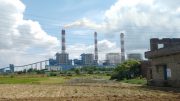 High expectations are being built around the forthcoming 21st Conference of the Parties (COP-21) to the UN Framework Convention on Climate Change (UNFCCC), which will convene in Paris at the end of the year. People around the world are looking for a global compact to address the intensifying challenge of climate change, whose impacts are likely to create a planetary emergency in coming years. Several reasons have been cited for optimism. These include mitigation commitments announced by the two largest emitters, China and the US, with US President Barack Obama announcing a more ambitious emission reduction target just last week as part of his Clean Power Plan. There is a steady upward trend in the use of renewable and clean sources of energy in major economies, including India.
High expectations are being built around the forthcoming 21st Conference of the Parties (COP-21) to the UN Framework Convention on Climate Change (UNFCCC), which will convene in Paris at the end of the year. People around the world are looking for a global compact to address the intensifying challenge of climate change, whose impacts are likely to create a planetary emergency in coming years. Several reasons have been cited for optimism. These include mitigation commitments announced by the two largest emitters, China and the US, with US President Barack Obama announcing a more ambitious emission reduction target just last week as part of his Clean Power Plan. There is a steady upward trend in the use of renewable and clean sources of energy in major economies, including India.
[…] From the INDCs submitted so far, and those anticipated in the next couple of months, it is certain that the aggregate of these pledges will not be sufficient to keep global temperature rise below 2 degrees centigrade, which is the stated objective of the negotiations. There are varying estimates but experts observe that, based on current and anticipated trends, we are on track for a 3-4 degree centigrade temperature rise towards the second half of this century.
This may lead to irreversible and catastrophic consequences for the planet’s life-sustaining systems. The “pledge and review” mechanism goes against the original intent and purpose of the UNFCCC concluded in 1992. The global consensus at that time was that science should determine the nature of the threat posed and the scale of international effort required to address it. That effort would be delivered through multilateral negotiations under the UNFCCC, based on the principle of equity, with parties assuming commitments in accordance with their common but differentiated responsibilities. The industrialised countries assumed commitments to reduce their greenhouse gas (GHG) emissions in absolute terms. Developing countries were to be enabled to undertake climate change action through the provision of finance and technology from the developed world. Further, the achievement of emissions reduction targets by developed countries was subject to strict international compliance with penalties for shortfalls. This legal regime has now been overturned, with negotiated targets being replaced by voluntary contributions by all countries with no compliance procedure. Developing countries, including India, resisted this during the course of the negotiations, but eventually acquiesced in the “pledge and review” format favoured by the US and other developed countries.
This is the reason why an outcome, albeit a weak one, is virtually assured in Paris. In the China-US understanding on their respective climate change commitments, China agreed to peak its GHG emissions by 2030. The US, in its original submission, agreed to reduce its emissions by 26-28 per cent in 2025 over 2005. In the latest announcement by Obama, the target has been revised marginally upward to 32 per cent reduction by 2030. If these targets are examined in the light of current emissions trajectories of the two countries, both may converge around 14 tonnes per capita of GHG emissions by 2030. These are extraordinarily high figures for the two largest emitters in the world and can in no way be described as ambitious. India’s per capita emissions are about 1.7 tonnes per capita currently and even the most elevated trajectories do not predict an increase beyond 7-8 tonnes per capita by 2030. It is difficult to understand why India is being asked to “step up to the plate” in the light of the US-China understanding.
[…]
The latest International Energy Agency (IEA) report states: “Our estimates do not show a clear diminishing trend in the share of investment going to fossil fuels since 2000 despite a quadrupling of the volume of investment going into non-fossil energy supply — including all renewable technologies, nuclear and biofuels.” Between the years 2014-35, out of a total projected investment in energy of $48 trillion, about $23 trillion will be devoted to fossil fuels and only $6 trillion to renewables and $1 trillion to nuclear. The conclusion is inescapable. The world is far from transitioning to a low-carbon growth path. The investment shift we are looking for can only come about if the prices of carbon-based fuels are high enough to encourage businesses to shift to renewables.
Currently, oil and gas prices are falling and renewables are becoming less competitive. Investment in renewables, having touched a respectable figure of $310 billion in 2011, declined sharply to $250 billion in 2014. Investment in fossil fuels continues at $750-800 billion per year for the past few years. As these investments are typically undertaken in a 30-40-year timeframe, it is unlikely that we will see significant change in energy infrastructure even by mid-century. For India, the dilemma lies in safeguarding its development prospects without having to accept, prematurely, any constraint on its energy choices. Yet, if a weak climate regime emerges at Paris, India will be one of the worst affected. In a longer-term perspective, India’s energy security will be better served by a graduated shift from fossil fuels to renewables, such as solar energy and clean energy like nuclear energy. India is dependent for 80 per cent of its oil supplies on imports and its dependence on imports of even coal and gas is rising relentlessly. This is no energy security.
[…]
Shyam Saran
Full version is available
on Indian Express






Be the first to comment on "An inconvenient truth"